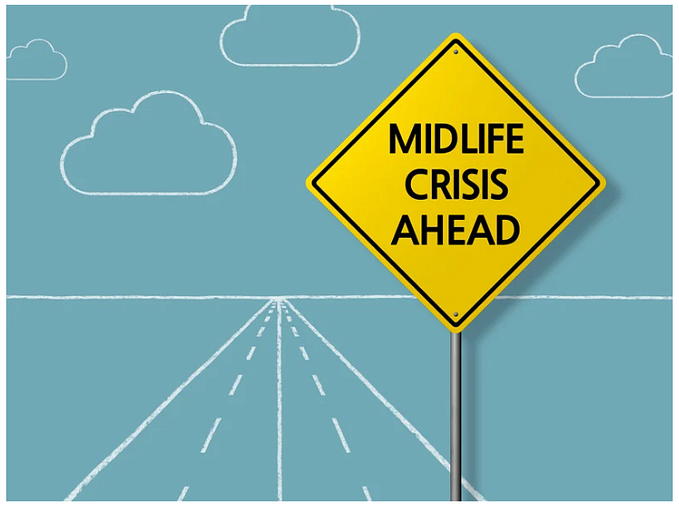You're reading for free via Joe Procopio's Friend Link. Become a member to access the best of Medium.
Member-only story
Why Two-Sided Marketplaces Self-Destruct
A two-sided marketplace never achieves the same level of customer loyalty that a direct marketplace does

 If you’ve ever used Uber or AirBNB, you’ve interacted with a two-sided marketplace. A two-sided marketplace is a technology-enabled platform that brings together two distinct groups of users to provide mutual benefit. One group — the customers — purchases from the other group — the providers — while the platform handles the pairing, the engagement, and the transaction itself.
If you’ve ever used Uber or AirBNB, you’ve interacted with a two-sided marketplace. A two-sided marketplace is a technology-enabled platform that brings together two distinct groups of users to provide mutual benefit. One group — the customers — purchases from the other group — the providers — while the platform handles the pairing, the engagement, and the transaction itself.
These days, it seems like anyone can stitch together a simple two-sided marketplace. All it takes is using readily-available technology to gather a big group of customers on one side and a curated list of providers on the other. The pioneers are already there: Uber and Lyft for transportation, AirBnB for lodging, Etsy for handcrafted products, and even the beleaguered dog-walking startup Wag.
The lure of building a two-sided marketplace is that it seems like a perpetual motion machine. The bigger each side gets, the more attractive it is to the other side, and vice versa. Then all you have to do is sit back, let them transact, take a small piece, and get rich.
But the vast majority of two-sided marketplaces fail.
I’ve been building two-sided marketplaces for the better part of 20 years, including one now where I’m bolting a third-party marketplace onto an existing multi-million dollar service platform. I’ve learned that it doesn’t matter if the market is ride-sharing or artisan T-shirts or dog-walking or anything in between — the vast majority of two-sided marketplaces fail for some of the same reasons, and those reasons originate from just a handful of risk areas.
Nail the risk areas, and you increase your chances of success exponentially.
Easy To Overlook, Hard to Conquer
All of the risk areas I’m going to share with you have two common threads.
- They rarely get much attention until they become a problem, which doesn’t happen until some time after launch.
- They are all difficult to get your hands around. The problems don’t have quick fixes. These are functions you…
Sometimes these risk areas are overlooked because they seem unimportant, and other times they’re overlooked because they seem too complex to deal with so early. None of that is true, so don’t overlook any of them.
Let’s start at the riskiest and most frequently bungled area.
Education
In order to survive, your two-sided marketplace needs to add value on both sides. In order to add value, you need to set the proper expectations on both sides. In order to set those expectations, your providers need to follow a detailed set of execution guidelines and your customers need to know how those guidelines are going to make them happy.
At a minimum, your providers need to know and perfect:
- When to engage the customer.
- How to engage the customer.
- How to execute the offering.
- How to communicate with both you and the customer before, during, and after the execution.
- What to do when anything goes wrong.
- What to do when they don’t know what to do.
- What they can’t do under any circumstances.
Your customers need to know all of the above, plus:
- Why they’re using you instead of the dozens of alternatives.
- What you need to know from them to be able to direct them to the right provider.
- What the provider needs to know from them to be able to transact with them.
- What their rights, warranties, guarantees, privacy protections, recourses, and support options are.
- What they’re not entitled to.
Here are the catches. Both the provider and the customer have to be gently encouraged to do things your way, or else your marketplace is moot. But your way can’t be too different from their way, or they won’t do it. And you need to explain your way as simply and quickly as possible.
Communication
Education without ongoing communication is a handbook. Handbooks get discarded the moment they get read, if they get read.
When something goes wrong, your customer is going to contact you. If they contact the provider instead of you, again, your marketplace becomes an unnecessary added expense to the same product or service that can be obtained elsewhere.
You’ll need dedicated support for your customers, via phone, text, message (like Slack or chat), social media, and email. This support needs to be human-driven and it needs to be 24/7 or at least have fallback options for off-business hours.
You can get away with a FAQ and a support email address. But you’ll be shocked at how quickly your customers will look at a FAQ, measure the time required to solve their problem on their own, and just spend that time moving to one of your competitors instead.
Vetting a provider over the internet is like wearing a bulletproof vest made out of magic and wishes: useless.
On the provider side, if you’re going to represent another company in a transaction with your own customer, you need to have direct access to that company’s process and infrastructure. The best way to do this is with a technical solution, a set of APIs to the provider’s system(s).
Yeah, right. Very few of your providers are going to be able to accommodate any kind of technological solution and, even if they could, integration is expensive. Keep in mind that a bunch of your providers or prospective providers will fail you, and you’ll cut ties with them. So you can’t just spend the money to plug in everyone who wants to sell through your platform.
You’ll need another way to communicate, it’ll need to be direct, and you’ll need people on your team whose job is to communicate with your providers. Up to a point, your customer support team and your provider support team can be the same team.
Vetting
I’m going to say this as loud as I can without resorting to all caps. Vetting a provider over the internet is like wearing a bulletproof vest made out of magic and wishes: useless.
Unless you can find some kind of third-party verification, you need to meet every provider you represent or at least talk to them on the phone. You also need to put some kind of protection between your liabilities and your provider’s performance and behavior. Finally, you need to have access to legal advice and representation close at hand.
If you think you don’t, or if you think that comes later, I can guarantee that you’re going to get in serious trouble. It’s not an “if” — it’s just a matter of time. If you have an emergency plan ahead of time and have someone to turn to, it will make the difference between whether or not you get past that trouble.
Quality
There is no caveat emptor (buyer beware) with a two-sided marketplace. The onus of offering a consistent level of quality on your platform is on you, and only you.
- You need rules and programs for your providers when you onboard them. Along with educating your provider with how to transact and execute, you’ll need to provide them with guidelines for quality — what is acceptable, what isn’t, and how that’s measured. If they don’t know your standards, they won’t perform to those standards, and furthermore you’ll have no recourse when they don’t.
- You need checks and balances during execution. A certain small percentage of both your customer and provider bases will try to defraud you or game your system. You’ll need to trust, but verify, meaning you’ll need to have virtual eyes and ears on all communication, engagement, transaction of funds, and follow-up.
- You need recourse and to make good afterward. You need to know what every single provider’s policy is on what happens when they mess up. And you’ll need to determine where their responsibility ends and yours begins. You’ll also need documented agreement on where that line is drawn.
Trojan Horses
Your providers are naturally incentivized to use your platform to find new business, then try to steal that business from your platform. Unless you prevent it, they will succeed.
I’ve talked to a number of marketplace entrepreneurs who have the philosophy that their platform adds so much value that they don’t care if the provider eventually steals the customer. That is such an awesome and altruistic way to do business. But all of those folks eventually went under for that very reason.
You need to prevent this with functionality, and you’ll need to fight it when it inevitably happens.
Costs
A common but overlooked problem with a two-sided marketplace is that the more business you do, the more expensive it becomes to operate, even as per item or per service costs go down.
As you scale, you lose flexibility and speed, especially if you need to pivot. One bad external break at a high throughput can be financially impactful enough to take your entire business down.
Along with managing costs, you have to handle the money yourself whenever possible. If you don’t, you won’t get paid sometimes, it’ll be a struggle to get paid sometimes, and you’ll have no recourse for provider fraud and incompetence at other times.
Priority
If there is one root risk area from which all the other risk areas spring forth, it’s priority. This isn’t so much something you have to fix as it is something that will dictate how you need to act.
- Your platform is not your providers’ top priority. Their own business is.
- Your customers are not your providers’ top priority. Their own customers are.
- Your platform is not your customers’ top priority, the service or product they obtain through it is.
A two-sided marketplace never achieves the same level of customer loyalty that a direct marketplace does. You’ll always be fighting a higher level of turnover, dealing with an outsized number of issues and problems, and asked to do a little bit more than you promised.
The only way to combat and conquer that lack of loyalty is to plan for it and proactively develop alternate ways to achieve it. The two-sided marketplaces that can do that are the ones that succeed.
Want to learn more about digital marketplaces? I’ve written quite a lot about them.
If you found this post actionable or insightful, please consider signing up for my free newsletter at joeprocopio.com so you don’t miss any new posts. It’s short and to the point.
If you’re looking for targeted startup advice, get a free 15-day trial of Teaching Startup, my project to bring expert advice and answers to entrepreneurs for just $10 a month, or less than 1% of the cost of a traditional advisor. Use invite code MEDIUM and get your first paid month for half off.










